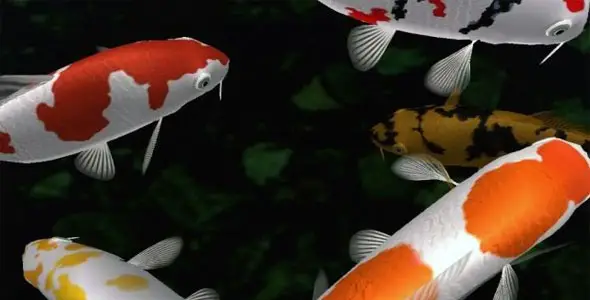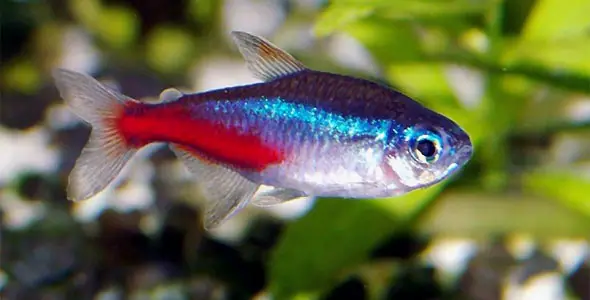Members of the largest family of fish, the Koi are perhaps the largest of the carps, capable of growing more than three feet in length and living up to sixty years. Though they are best suited for ponds and pools because of this, the Koi can make an excellent aquarium pet. They thrive in cooler waters, which in turn keeps their appetites high and their coloration vibrant. Though they are a relatively peaceful fish, they should not be kept in tanks with smaller fish as they are likely to eat them. They are best kept with large goldfish and catfish and the occasional algae eating fish such as the Plecostomus.
Sub-Species for Aquariums:
Koi are divided by color and scale appearance. There are two main groups: metallic and non-metallic. Metallic fish shimmer in the water because their scales reflect the light, while non-metallic Koi have more of a matte appearance.
Care:
While Koi are fairly easy to keep, they do have some necessary care requirements, especially if kept in a pond or pool as different seasons bring different needs.
The greatest concern when caring for Koi is water quality. Koi tend to be bottom-dwelling and will stir up debris, making their home a terrible mess. It is difficult to keep Koi in a limited amount of water, which is why ponds and pools are so highly recommended. A general rule of thumb, however, is just to provide as much space and water as possible. Keep a high quality filtration system to help control the balance and remove waste build up. Small pumps or fountains will help to keep the water oxygenated. Be sure that you regularly test your water to check for high levels of ammonia and nitrates.
SUMMER CARE:
The summer months are the most active time for your Koi and they will need to stock up on food with a good quality diet. There are a number of pellet foods specifically designed for Koi that will meet their nutritional needs. Feed at the same time and in the same location everyday and you will be able to see your Koi as they come up for food. After a time, you’ll find them waiting there for you when they know it’s meal time. Regularly check over your fish, making sure each has a healthy appetite and none appear to be ill.
WINTER CARE:
While Koi do well in cooler waters, they will begin to hibernate once the temperature reaches below 50˚F. If you are keeping your fish in a pond, be sure that there is a heater of some kind to prevent the pond from freezing. Also, make sure that the deepest portion of your pond is at least three feet deep. Once the temperature drops below 50˚F, stop feeding your fish. They will begin slowing down and the undigested food will float to the bottom and simply muddle up your pond, providing extra work for your filtration system.
Diet:
Koi are omnivores and will eat insects, worms, snails, smaller fish and aquatic plants. They are most often fed specially formulated pellets that will help to keep their color bright.
Size: Up to 36 Inches
Freshwater/ Saltwater: Freshwater
Diet: Omnivore
Reef Compatibility: NA
Tank Mate Compatibility: 5
Lifespan: Up to 60 Years





